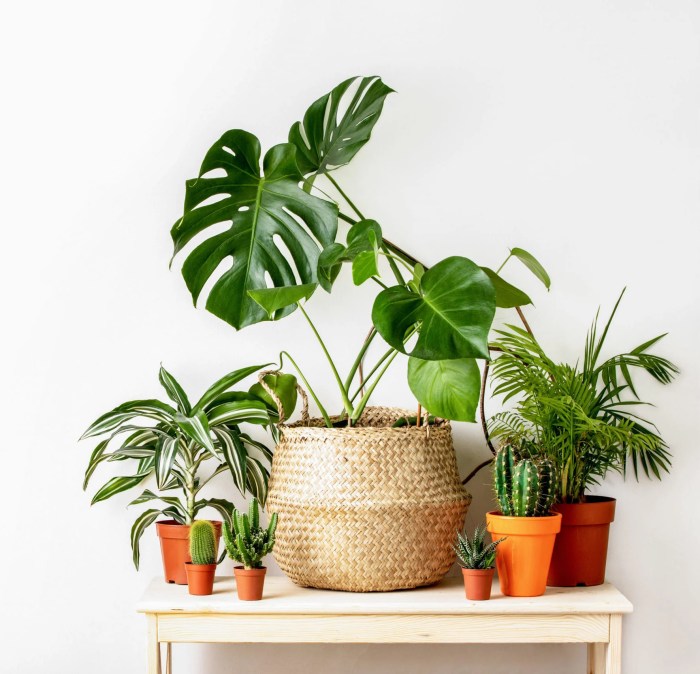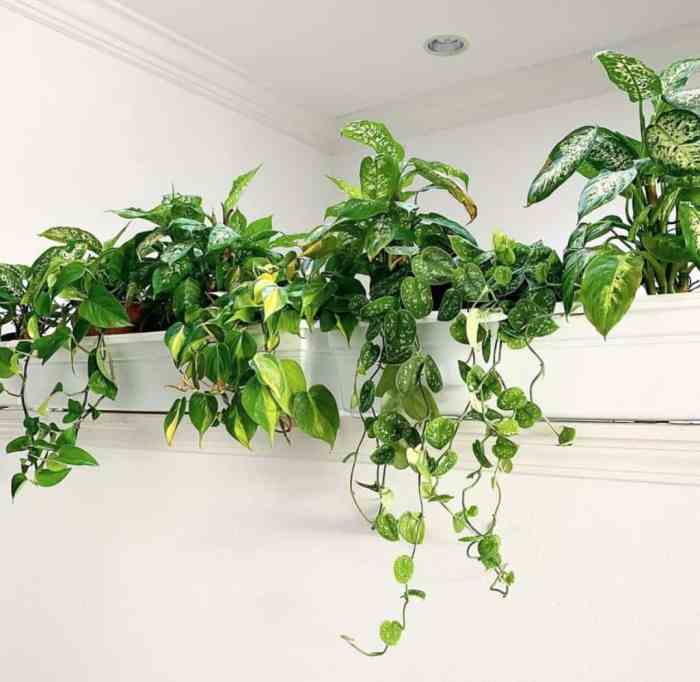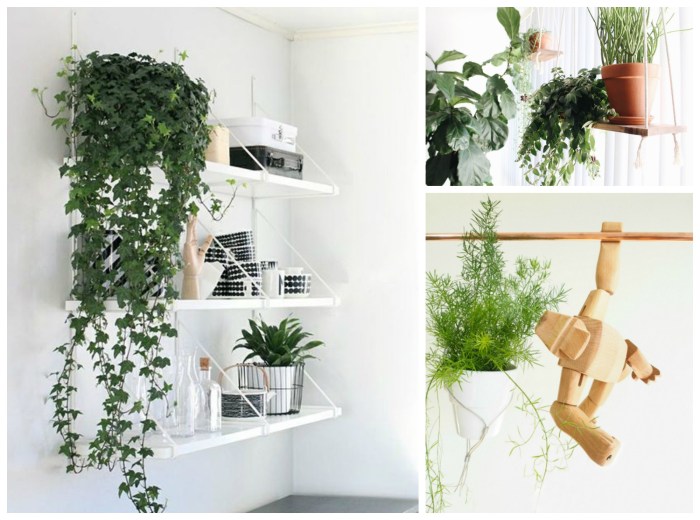Hanging plants have become increasingly popular for indoor spaces, offering a unique way to add greenery and create a sense of vertical space. From trailing vines to cascading foliage, there are many best indoor plants that hang down to choose from, each with its own distinct charm and care requirements.
Whether you’re a seasoned plant enthusiast or just starting your indoor gardening journey, this guide will provide you with everything you need to know about the best indoor plants that hang down, from their benefits and care tips to creative ways to display them in your home.
Most Popular Indoor Hanging Plants
Hanging plants add a touch of greenery and elegance to any indoor space. They are a great way to add life to a room without taking up too much floor space. There are many different types of hanging plants to choose from, each with its own unique appearance and care requirements.
Some of the most popular indoor hanging plants include:
- Spider plant( Chlorophytum comosum): Spider plants are known for their long, trailing leaves that produce baby spider plants at the tips. They are easy to care for and can tolerate a wide range of light conditions.
- Pothos( Epipremnum aureum): Pothos is another popular hanging plant with trailing vines and heart-shaped leaves. It is very easy to care for and can tolerate low light conditions.
- Philodendron( Philodendron scandens): Philodendrons are a large genus of plants with many different species that are popular as hanging plants. They have large, glossy leaves that come in a variety of shapes and colors.
- String of pearls( Senecio rowleyanus): String of pearls is a unique hanging plant with long, trailing stems that are covered in small, round leaves that resemble pearls.
- Burro’s tail( Sedum morganianum): Burro’s tail is a succulent hanging plant with long, trailing stems that are covered in plump, blue-green leaves.
Benefits of Indoor Hanging Plants
Indoor hanging plants offer numerous benefits that enhance both the well-being of individuals and the ambiance of a living space.
One significant advantage is their ability to improve air quality. Studies have shown that certain plants, such as spider plants and peace lilies, effectively remove harmful toxins like formaldehyde and benzene from the air, creating a healthier indoor environment.
Stress Reduction
Research indicates that the presence of indoor plants can significantly reduce stress levels. The act of caring for plants, observing their growth, and interacting with their greenery has been found to have a calming and restorative effect on the mind and body.
When choosing the best indoor plants that hang down, consider their draping qualities. Best draping houseplants have long, flowing stems that cascade over the edges of pots or baskets, creating a lush and elegant display. These plants add a touch of greenery and drama to any room, and they can help to purify the air.
Some of the best indoor plants that hang down include pothos, philodendron, and spider plants.
Enhanced Aesthetics
Hanging plants add a touch of elegance and natural beauty to any room. Their cascading foliage and intricate shapes create a visually appealing display that complements various interior design styles. Moreover, hanging plants help create a sense of vertical space, making a room appear larger and more inviting.
Care and Maintenance of Indoor Hanging Plants: Best Indoor Plants That Hang Down

Maintaining the health and beauty of indoor hanging plants requires regular care and attention. Proper watering, fertilizing, and pruning are essential for optimal growth and appearance.
Watering
The frequency of watering depends on factors such as plant species, pot size, and humidity levels. Generally, hanging plants should be watered when the top inch of soil feels dry to the touch. Avoid overwatering, as this can lead to root rot.
Fertilizing
Fertilizing hanging plants every two to four weeks during the growing season (spring and summer) promotes healthy growth. Use a balanced liquid fertilizer diluted to half strength. Avoid over-fertilizing, as this can burn the plant’s roots.
Pruning
Pruning helps control growth and remove dead or damaged leaves. Use sharp, clean shears to trim back overgrown stems and remove any yellowing or brown leaves. Pruning also encourages new growth and keeps the plant looking its best.
Common Problems and Solutions
- Yellowing Leaves:Overwatering, underwatering, or nutrient deficiency can cause yellowing leaves. Adjust watering frequency or fertilize as needed.
- Brown Tips:Dry air or underwatering can cause brown tips. Increase humidity by misting the plant or using a humidifier. Water more frequently.
- Drooping Leaves:Underwatering or low humidity can cause drooping leaves. Water more frequently or increase humidity.
- Pests:Spider mites, mealybugs, and aphids are common pests of hanging plants. Treat with insecticidal soap or neem oil.
Design Considerations for Indoor Hanging Plants

Incorporating hanging plants into your indoor space can elevate its aesthetics and create a serene atmosphere. However, choosing the right plants and arranging them effectively requires careful consideration.
Before selecting hanging plants, assess the available light, ceiling height, and overall décor of the room. Plants with trailing foliage, such as pothos or spider plants, are ideal for low-light areas, while those with more upright growth, like succulents or ferns, can tolerate brighter conditions.
Hanging plants are a great way to add life and greenery to your home. They can be used to create a variety of looks, from lush and tropical to modern and minimalist. If you’re looking for the best indoor plants that hang down, there are many options to choose from.
Some of the most popular include pothos, philodendron, and spider plants. If you have a spot with plenty of bright light, you can also consider some of the best hanging plants for high light , such as the string of pearls or the burro’s tail.
Hanger Options
Hanging plants can be displayed in various ways to complement the room’s style. Macrame hangers, with their intricate knots and bohemian flair, add a touch of whimsy. Metal or wooden hangers provide a more modern look, while shelves or plant stands offer a versatile option that can accommodate multiple plants at different heights.
Creating a Focal Point
Hanging plants can create a focal point in a room. Group several plants together at varying heights to create a lush, cascading effect. Alternatively, suspend a single, statement-making plant from a high ceiling to draw the eye upward.
Balancing the Space
When arranging hanging plants, consider the balance and symmetry of the space. Avoid overcrowding one area or creating an unbalanced look. Distribute the plants evenly or create a staggered arrangement for visual interest.
Many people love to have plants in their bedroom, and one of the best ways to display them is with a bedroom plant hanger . These hangers come in a variety of styles and sizes, so you can find one that fits your décor.
They are also a great way to add some greenery to your bedroom without taking up too much space. Some of the best indoor plants that hang down include pothos, spider plants, and ferns.
Creative Uses for Indoor Hanging Plants

Indoor hanging plants have evolved beyond their traditional role as decorative elements in hanging baskets. Today, these versatile plants are being used in innovative ways to enhance the aesthetics and functionality of interior spaces.
One of the most popular trends is the creation of living walls and vertical gardens using hanging plants. These vertical displays not only add a touch of greenery to walls but also help purify the air and create a sense of tranquility.
Hanging Plants as Room Dividers, Best indoor plants that hang down
Hanging plants can also be used as natural room dividers, providing a flexible and stylish way to separate different areas within a room. By strategically placing hanging plants, you can create distinct zones without the need for bulky furniture or permanent partitions.
Outcome Summary
Incorporating hanging plants into your indoor space is a simple yet effective way to transform the ambiance of your home. By choosing the right plants and providing them with proper care, you can enjoy the beauty and benefits of these botanical wonders for years to come.
Helpful Answers
What are the benefits of having indoor hanging plants?
Indoor hanging plants offer numerous benefits, including improved air quality, reduced stress levels, and enhanced aesthetics. They can also help create a sense of vertical space and add interest to a room.
How do I care for indoor hanging plants?
Caring for indoor hanging plants is relatively easy. They typically require regular watering, fertilizing, and pruning. Common problems that can arise with hanging plants include overwatering, underwatering, and pests. It’s important to address these issues promptly to ensure the health and longevity of your plants.
What are some creative ways to display indoor hanging plants?
There are many creative ways to display indoor hanging plants. You can use traditional hanging baskets, macrame hangers, or shelves. You can also create living walls or vertical gardens using hanging plants. With a little creativity, you can find a way to display your hanging plants that complements your home décor and adds a touch of greenery to your space.